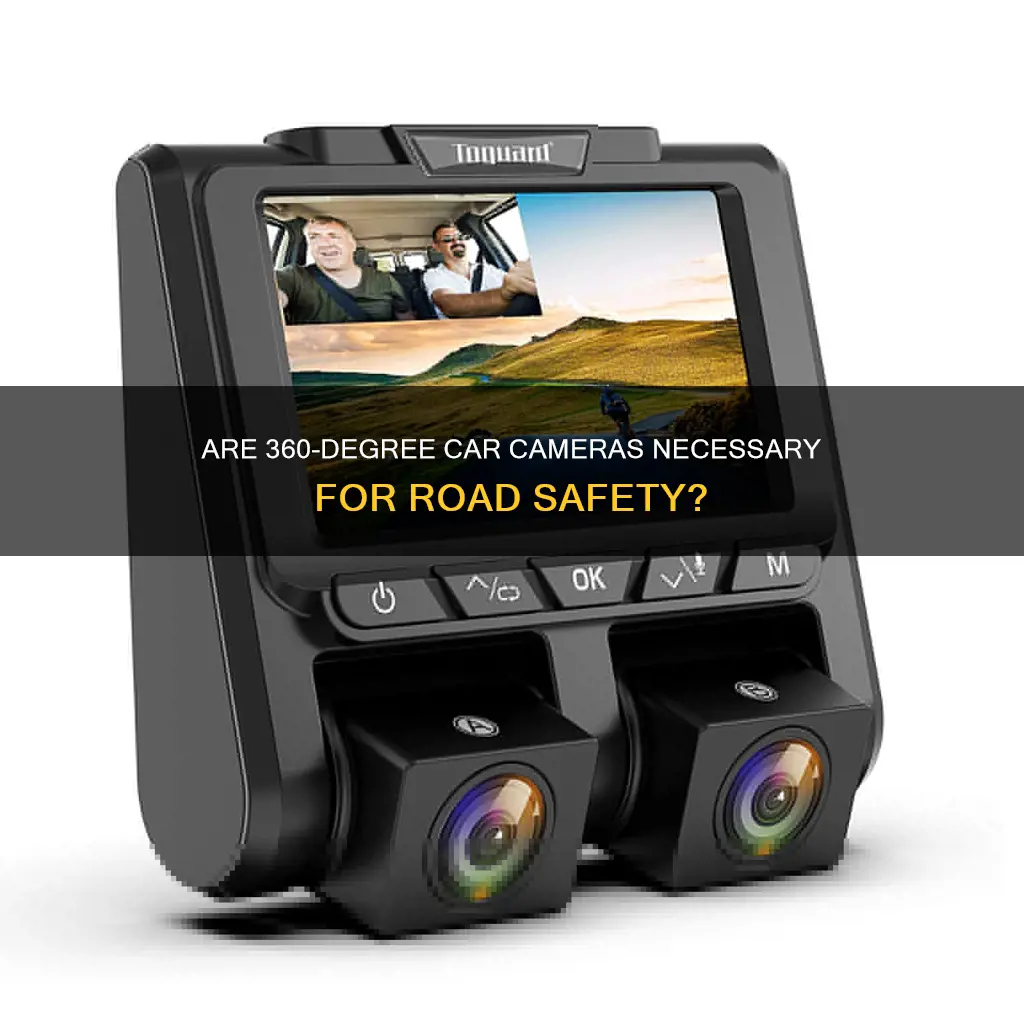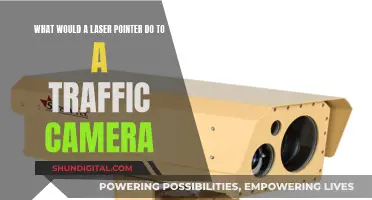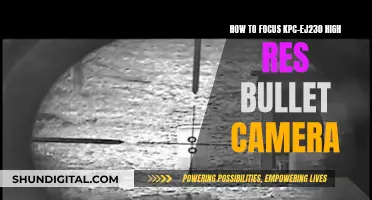
360-degree cameras are becoming increasingly popular in the automotive industry. This technology is a valuable safety feature that helps drivers stay aware of their surroundings and park safely. While it used to be reserved for premium cars, it is now available in almost every segment. In this article, we will discuss the benefits of 360-degree cameras, how they work, and whether they are mandatory in cars.
| Characteristics | Values |
|---|---|
| Purpose | To help drivers park and to increase safety |
| Function | Provides a real-time view of the area surrounding the car |
| Technology | A combination of multiple camera arrays placed around the vehicle, paired with software that renders the surrounding in real-time |
| Number of Cameras | Basic setup includes at least four cameras; higher-segment cars may use more |
| Camera Placement | Front and rear bumpers, under side mirrors, grille, emblem, trunk release, side |
| Display | Split-screen display on infotainment system or dashboard |
| Image Processing | Software stitches images together to form a single 360-degree image |
| Alerts | Proximity alerts for nearby objects |
| Cost | Typically an expensive add-on, ranging from $900 to $4,760 |
| Installation | Can be installed aftermarket, but factory-installed systems are tailored for better performance |
What You'll Learn
- degree cameras are a safety feature that helps drivers stay aware of their surroundings and park safely
- The system is made up of multiple cameras placed around the vehicle, with footage stitched together by software to provide a bird's-eye view
- The cameras are typically placed on the front grille, under the side mirrors, and on the rear bumper
- Aftermarket kits are available to install a 360-degree camera system in your car, but factory-installed systems tend to perform better
- Some of the best 360-degree camera systems are offered by Hyundai, Kia, Audi, BMW, and Mercedes-Benz

360-degree cameras are a safety feature that helps drivers stay aware of their surroundings and park safely
360-degree cameras are a valuable safety feature that helps drivers stay aware of their surroundings and park safely. They are particularly useful when parking in confined spaces, such as narrow parking spots or garages. By providing a top-down or bird's-eye view of the vehicle and its surroundings, drivers can easily navigate and avoid obstacles. This is especially helpful when backing into or out of parking spaces, reducing the risk of minor accidents, such as scraping a curb or bumping into another car.
The 360-degree camera system combines footage from multiple cameras placed around the vehicle. Typically, there are cameras on each bumper, within emblems or grilles, and underneath side mirrors. These cameras activate when the vehicle is in reverse or can be manually turned on by the driver. The software then stitches together the footage from each camera to create a single, seamless image displayed on the infotainment screen. This technology allows drivers to see what's around their vehicle, providing a level of awareness that traditional rearview or side mirrors cannot offer.
In addition to parking assistance, 360-degree cameras offer other benefits. For instance, some vehicles can display the view from a specific camera, such as the passenger-side camera, to help avoid curbing wheels. Newer systems also allow manual adjustment of the camera angle, providing a more dynamic view of the vehicle's surroundings. This can be especially useful when checking for obstacles before opening a door or when switching lanes.
While 360-degree camera systems are not mandatory, they are becoming increasingly popular as a must-have safety feature. They are offered by many automakers, although they tend to be available on higher trim levels or as an expensive add-on for most mainstream carmakers. However, some car manufacturers, like Nissan, are leading the charge in democratizing this technology by offering it on more affordable models.
Overall, 360-degree cameras are a valuable tool for drivers, providing increased awareness of their surroundings and making parking safer and less stressful. While they may come with a higher price tag, many drivers find the convenience and peace of mind they offer to be well worth the investment.
Surveillance Cameras: Legal or an Invasion of Privacy?
You may want to see also

The system is made up of multiple cameras placed around the vehicle, with footage stitched together by software to provide a bird's-eye view
A 360-degree camera system in a car is made up of multiple cameras placed around the vehicle, typically on each bumper and on either side. This usually includes a rearview camera, which is a government-mandated feature on all new cars, side-view cameras mounted in the outboard side mirrors, and a front-facing camera. The footage from each camera is stitched together by software to provide a top-down or bird's-eye view of the vehicle and its surroundings. This composite image is then displayed on the vehicle's infotainment screen, allowing the driver to easily see nearby obstacles and avoid them when parking.
The number of cameras in a 360-degree camera system can vary, with basic setups including at least four cameras, while higher-end cars may use more cameras to provide a more accurate 360-degree perspective. The image stitching process involves geometric and photometric alignment, as well as composite view synthesis, to create a seamless, coherent image.
In addition to the cameras, a 360-degree camera system also includes proximity sensors that help evaluate the distance to nearby objects. The data from the cameras and sensors is processed by image processing software, which creates the final composite image that is displayed on the vehicle's infotainment system.
The 360-degree camera system is an advanced driver assistance technology that not only makes parking easier but also improves safety by providing drivers with a better awareness of their surroundings. It is becoming an increasingly popular feature in new vehicles, with many automakers offering it as an option, especially in higher trim levels or luxury models. While it is not yet mandatory, its popularity is growing, and it is expected to become even more common as autonomous vehicles become more prevalent.
Choosing Solar Panels for Trail Cameras
You may want to see also

The cameras are typically placed on the front grille, under the side mirrors, and on the rear bumper
360-degree cameras are not mandatory in cars, but they are becoming increasingly popular as a must-have safety feature. This technology is a composite of camera angles from several locations around the vehicle, providing an overhead perspective of the vehicle and its surroundings. The cameras are typically placed on the front grille, under the side mirrors, and on the rear bumper.
The front grille camera captures the forward view, while the side-view cameras mounted under the side mirrors provide a view of the vehicle's sides. The rear bumper camera shows what's immediately behind the car. These cameras work together to provide a seamless, bird's-eye view of the vehicle and its surroundings, making it easier to navigate and park in tight spaces.
In addition to the standard locations, some vehicles may have additional cameras placed within emblems, near the trunk release, or at the corners of the bumpers. These cameras can provide a closer view of specific areas, such as the wheels or the front of the hood, to assist with parking or manoeuvring in tight spaces.
The 360-degree camera system combines the perspectives of these multiple cameras, stitching the images together to form a single, coherent image on the vehicle's display screen. This technology enhances the driver's awareness of their surroundings, improves parking accuracy, and helps avoid accidents and scuffs.
Motorola's 360 Moto Mod Camera: How Many Megapixels?
You may want to see also

Aftermarket kits are available to install a 360-degree camera system in your car, but factory-installed systems tend to perform better
A 360-degree camera system in a car is a valuable safety feature that provides a real-time view of the area surrounding the vehicle. This technology combines the perspectives of several cameras placed around the car, typically giving a top-down view. While backup cameras are now mandatory, 360-degree camera systems are becoming increasingly popular as they provide a more comprehensive view, making parking easier and safer.
Aftermarket kits are available to install a 360-degree camera system in your car. These kits typically include several cameras, a controller, and the necessary cables to connect to your infotainment screen. They can provide a better view than a reversing camera or no camera at all. However, they may not match the performance of a factory-installed system.
Factory-installed camera systems benefit from being specifically engineered and tailored to the vehicle model. The cameras are perfectly positioned, seamlessly integrated into the design, and protected from the environment. The resulting images are typically clearer and more coherent, providing a better user experience.
The cost of a 360-degree camera system can vary. Aftermarket kits can range from $200 to $900, plus installation costs if you choose to have it professionally installed. On the other hand, factory-installed systems are often included in higher trim levels or bundled as part of an option package, which can significantly increase the overall vehicle price.
While a 360-degree camera system is not mandatory, it is a valuable addition to any vehicle, providing improved safety and convenience when parking or navigating tight spaces.
Where are the Webcam Cameras on Desktop Computers?
You may want to see also

Some of the best 360-degree camera systems are offered by Hyundai, Kia, Audi, BMW, and Mercedes-Benz
360-degree camera systems are not mandatory, but they are becoming increasingly popular as a must-have safety tool in new vehicles. Nearly every automaker offers at least one model with a 360-degree camera, but it is typically an expensive add-on for most vehicles, especially for mainstream carmakers.
Hyundai and Kia vehicles with 360-degree cameras are particularly clever. The K900 model provides a corner view of the front wheels to avoid curbing and is easy to adjust between different views. Audi, BMW, and Mercedes-Benz systems also offer multi-angle views of the car's exterior, making it easier to park and admire the styling from inside the cabin.
In addition to their practical benefits, 360-degree camera systems can also provide a fun way to explore the vehicle's exterior design from different angles. Overall, while not mandatory, these camera systems offer enhanced visibility, safety, and convenience for drivers.
Materials Used to Make Camera Mounts
You may want to see also
Frequently asked questions
A 360-degree camera system is a collection of multiple cameras placed around a car to provide a real-time view of the area surrounding the vehicle. The system combines the perspectives of these cameras into a single image, usually a top-down view, to help drivers park and avoid obstacles.
The main benefit of a 360-degree camera is improved safety. The system helps drivers avoid accidents, particularly when parking or manoeuvring in tight spaces, by providing a comprehensive view of their surroundings. This technology also reduces the risk of low-speed impacts, such as curbing wheels or scuffing bumpers.
Backup cameras are now mandatory on new vehicles in some countries, including the United States and India. However, a 360-degree camera is not mandatory and often comes as an optional extra or is only available on higher-end models.
A 360-degree camera is typically an expensive add-on, with prices ranging from a few thousand dollars to over $4,000 for certain models. The cost can be a major hurdle for many buyers, especially when added to the base price of a new car.
Yes, there are aftermarket 360-degree camera kits available that you can install yourself. However, these kits may not perform as well as factory-installed systems, which are designed specifically for each car model. Aftermarket cameras may also require additional installation costs.







